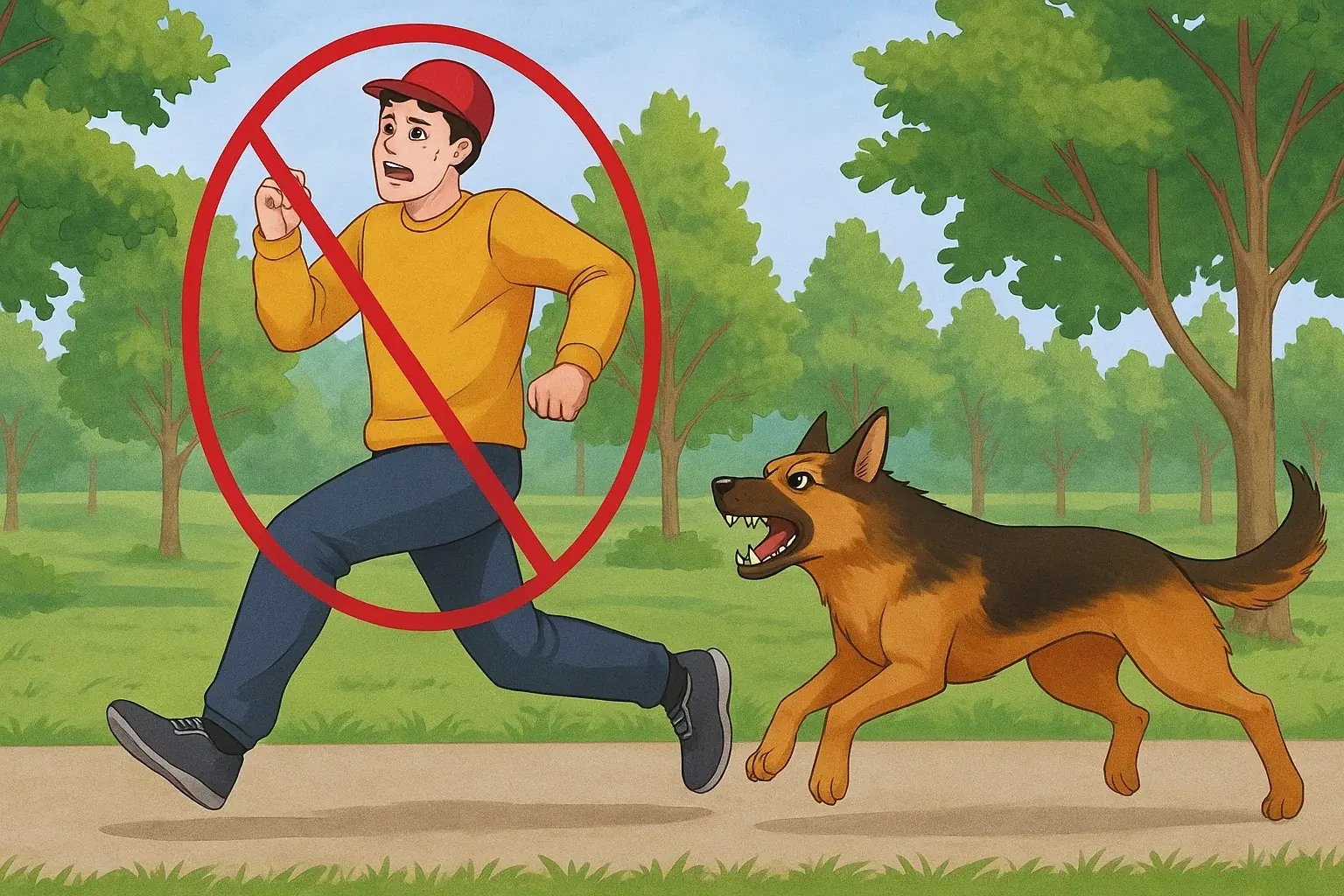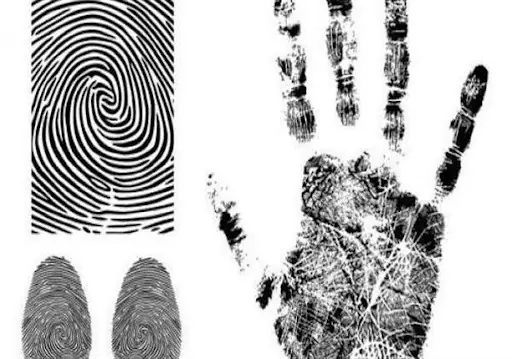
The reason dogs often chase and bark some people but not others
Dogs have a natural instinct to chase. Whether it’s a bouncing tennis ball, a fluttering leaf, or a fast-moving squirrel, the sight of something in motion often triggers an irresistible urge to run after it. But what about those moments when a dog chases a human? If you’ve ever been on the receiving end of this behavior, you might have wondered — is it aggression, protection, curiosity, or something else entirely?
One key explanation lies in what animal behavior experts call the predatory drive. Dogs are descendants of wolves, and deep in their DNA is an instinct to pursue moving targets. While most domestic dogs no longer rely on hunting for survival, that chase reflex remains — and can be triggered by a person’s speed, movements, or even their body language.

Territorial Protection
Dogs are also highly territorial animals. When someone approaches their home, yard, or even a favorite spot in the park, they may bark, growl, or display their teeth as a warning. If they feel the perceived “intruder” isn’t backing off, they might run toward them to defend what they see as their space. This reaction is often heightened in breeds that have been historically used as guard dogs.
Curiosity About the Unknown
Not all chases are aggressive in nature. Sometimes, a dog’s reaction to a person is driven by curiosity — especially when they encounter someone with unfamiliar scents, clothing, or mannerisms. Dogs have an extraordinary sense of smell, capable of detecting odors at concentrations up to 100,000 times lower than humans can. That means a stranger’s perfume, soap, or even the scent of another pet on their clothing can pique a dog’s interest and prompt an investigative chase.
Unusual Human Traits That Trigger Dogs
Certain human features or accessories can make dogs uneasy. For some, it might be a pair of sunglasses or a wide-brimmed hat that obscures facial features. For others, a deep voice, sudden hand movements, or even the way someone walks might trigger a defensive or excited reaction.
Protecting Their Owners
One of the most common and loyal motivations for chasing strangers is protection. Many dogs see their owners as part of their “pack” and feel responsible for keeping them safe. If they sense a potential threat — real or imagined — they may position themselves between their owner and the perceived danger, chasing after anyone who comes too close.
Past Experiences and Learned Behaviors
Dogs are highly observant animals with remarkable memory. If a dog has had a negative experience with a person in the past — such as being startled, teased, or harmed — they may carry that wariness into future encounters. This can manifest as barking, growling, or chasing, even if the current person poses no threat.
On the flip side, chasing behavior can sometimes be unintentionally encouraged. If a dog chases and the person runs away, the dog may interpret it as a game, reinforcing the behavior.
How to Prevent Chasing Behavior
The best way to minimize unwanted chasing is through early socialization. Exposing a puppy to different environments, sounds, scents, and people helps them build confidence and reduces fear-based reactions later in life.
Consistent positive reinforcement training can also make a huge difference. Rewarding calm, non-aggressive behavior around strangers — with treats, praise, or playtime — teaches dogs that good manners bring positive outcomes. Over time, this builds a more relaxed and trusting temperament.
The Takeaway
Chasing is part instinct, part learned behavior, and part emotional response. Whether a dog is acting out of protection, curiosity, or past experiences, understanding the “why” behind the chase is the first step in addressing it. With patience, training, and positive social exposure, dogs can learn to greet the world — and the people in it — with curiosity instead of confrontation.
News in the same category


Trump is Looking to Change Marijuana Laws in the Us and It Could Have a Major Impact

Decode the secrets behind human fingerprints.

Ch!lling simulation shows what actually happens to your body when you d!e

Scientists issue warning for surprising item people use that's 40 times dirtier than a toilet seat

Scientists reveal what your favorite way to eat eggs really says about you

Truth behind 5,000-year-old Stonehenge mystery as scientists reveal how it was actually built

New report reveals exactly which professions are most at risk from AI takeover in the next five years

12 Small Habits That Could Be Ruining Your Home

Are Brown Recluse Bites Really That Dangerous? Here’s What You Should Know

Blue Stop Signs: What Do They Mean?

16 Subtle Clues Your Partner May Not Be Loving You as You Deserve

15 Phrases You Should Never Tell a Man to Avoid Tension

The UK Has Created a Robot Fish That Eats Ocean Plastic and Powers Itself by Digesting It, Eliminating the Need for a Battery

MrBeast finally reveals his net worth after admitting how much is in his bank account live on stream

Influencer trapped in one of the most remote places on Earth faces brutal fine as legal fate is revealed

Texas announces major plan to fight flesh-eating flies as they prepare to descend on the US

The Volume Buttons on Your iPhone Have Countless Hidden Features
Your iPhone’s volume buttons may seem simple, but they’re packed with powerful, time-saving shortcuts. From snapping perfect photos without touching the screen to activating emergency calls in seconds, these “secret” tricks can make your iPhone ex

Can You Find the Hidden Pipe? Only 2% Can!
News Post

Does Chest Pain Always Mean a Heart Attack?

10 Tasty Snacks Packed With Good-for-You Carbs

Pokeweed: The Attractive but Highly Toxic Plant Growing in Your Backyard

Goosegrass: Health Benefits and Uses

The Powerful Health Benefits of Lipton, Cloves, and Ginger Tea Every Woman Should Know

Drink this before bed to balance blood sugar & stop nighttime bathroom trips!

This vegetable oil linked to “aggressive” tumour growth, study finds

The Miracle Tree: 16 Health Benefits of Moringa & How to Use It

Clove Collagen Gel : Night Gel For A Smooth & Tight Skin

Transform your skin with fenugreek seeds

8 Natural Remedies to Cure Sinus Infections Without Antibiotics

Watch – Mexico City is Converting Highway Pillars Into Vertical Gardens to Clean the Air and Beautify the City

Trump is Looking to Change Marijuana Laws in the Us and It Could Have a Major Impact

The Best Hair Growth Vitamins and Supplements to Fight Hair Loss

Foods to Eat if You Need to Poop – The Best Natural Laxatives to Relieve Constipation

The 4 vitamins this 87-year-old woman takes to stay aging (and you can too)

6 Powerful Castor Oil Benefits for Your Health and Wellness

The Possible Benefits of Himalayan Salt Lamp

The Most Effective Ways to Get Rid of Bumps on Inner Thigh (Backed by Science)
